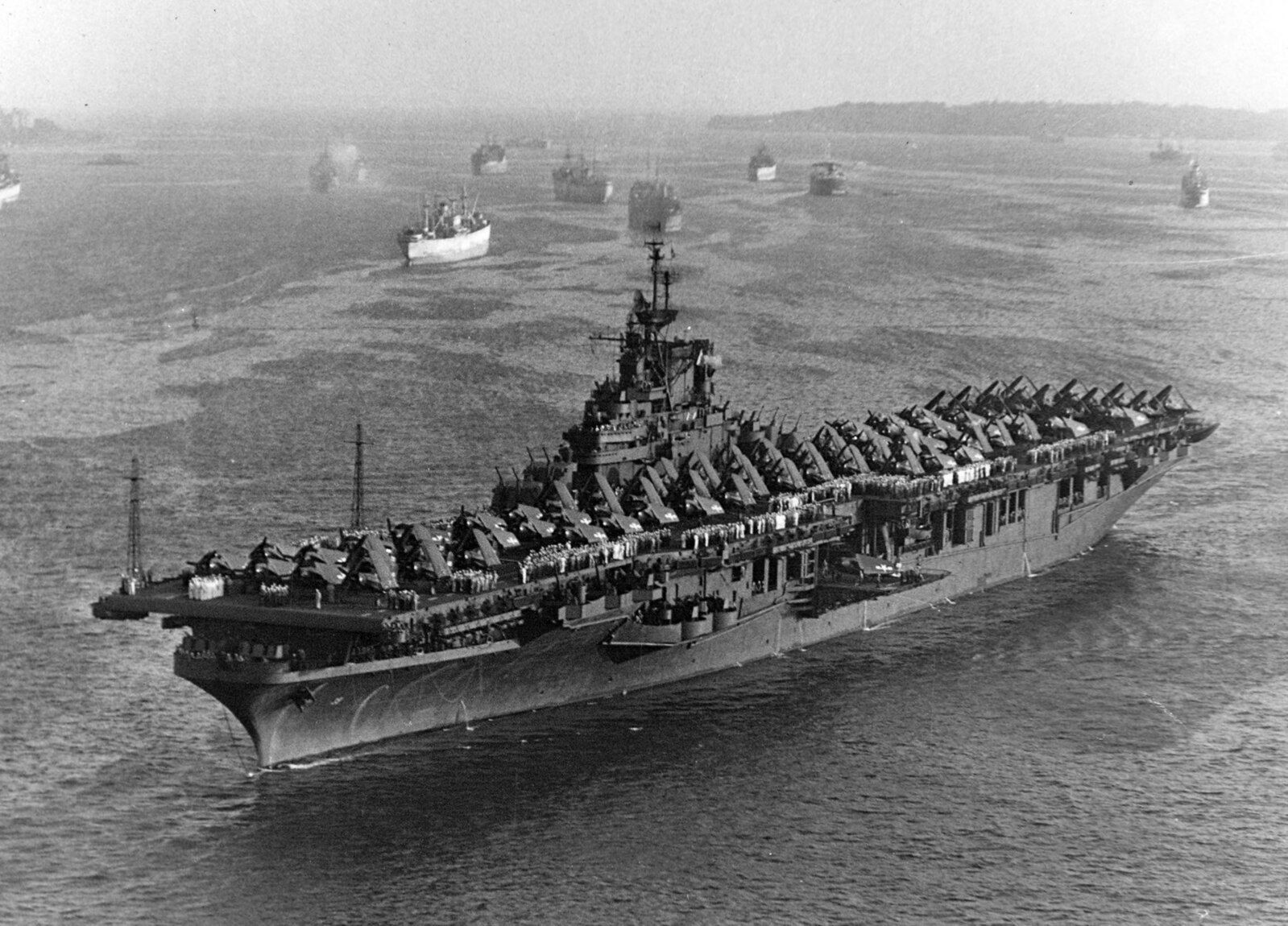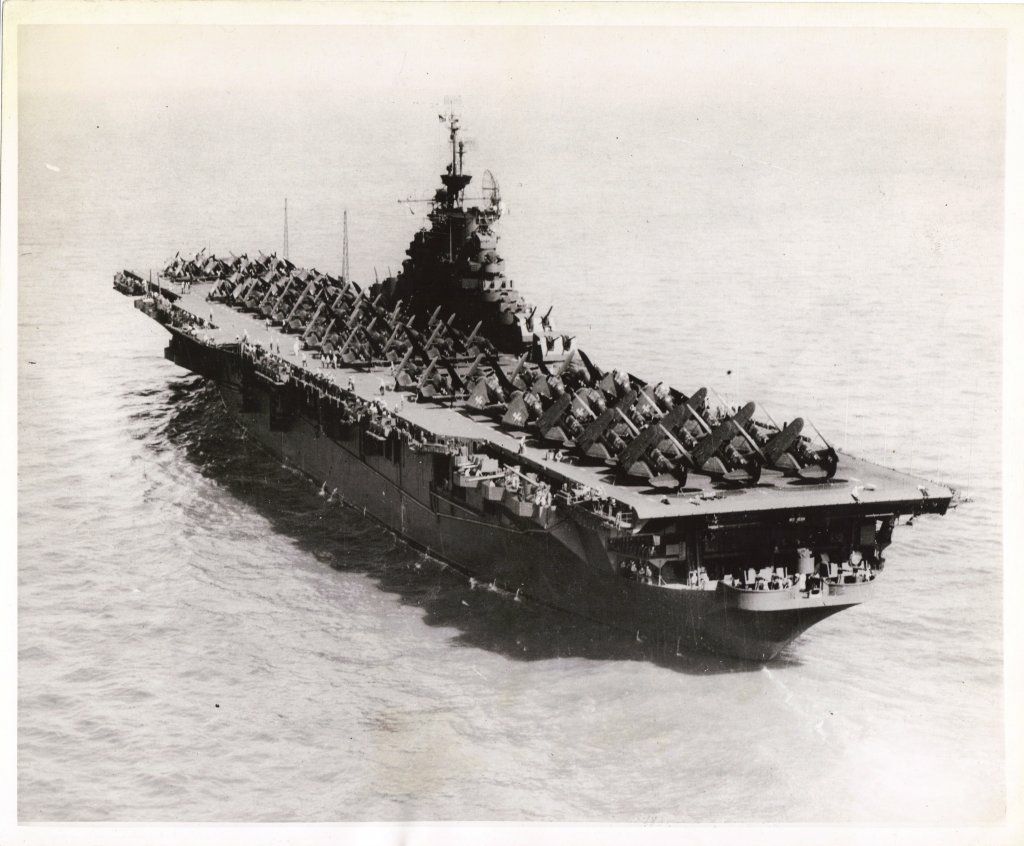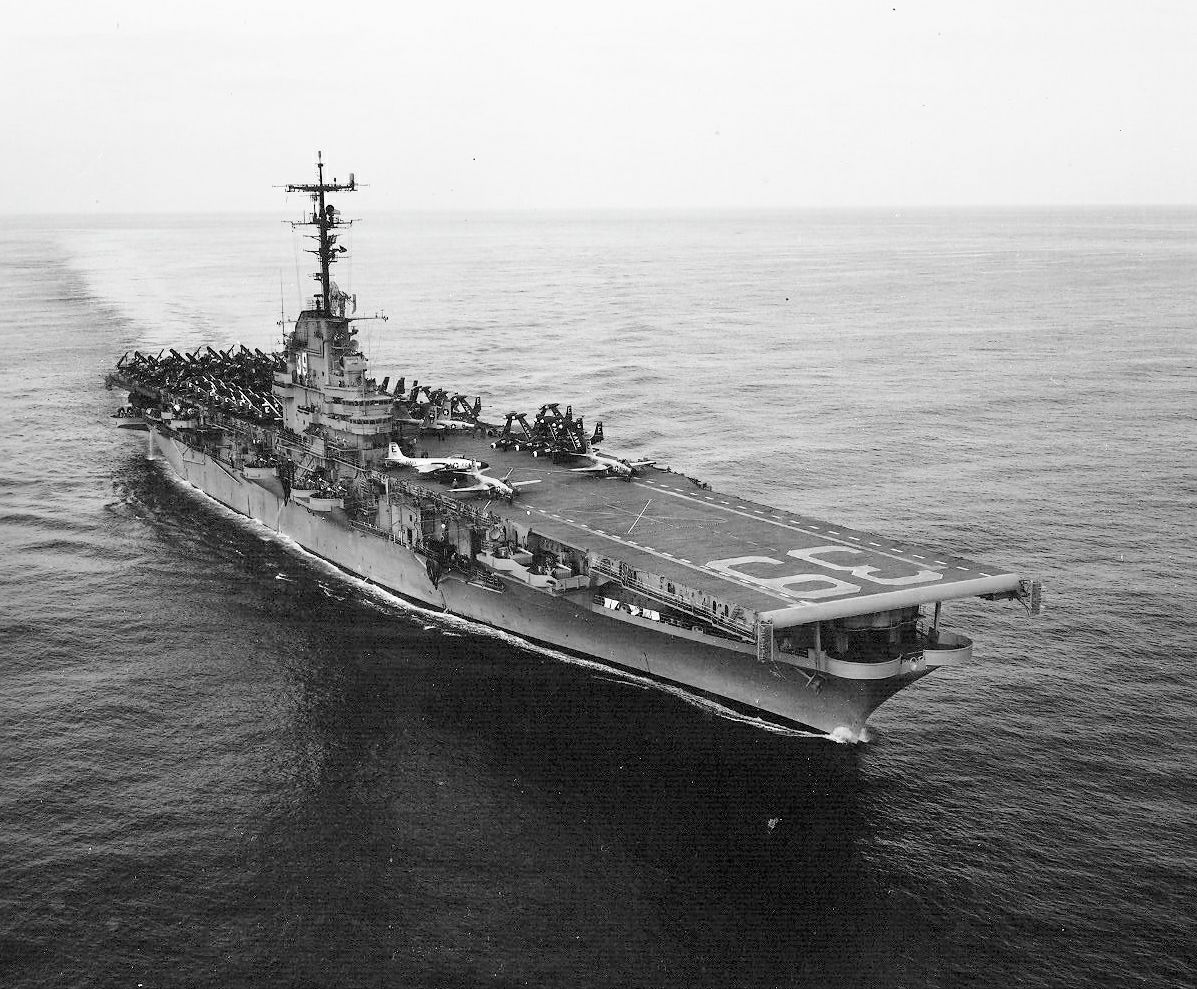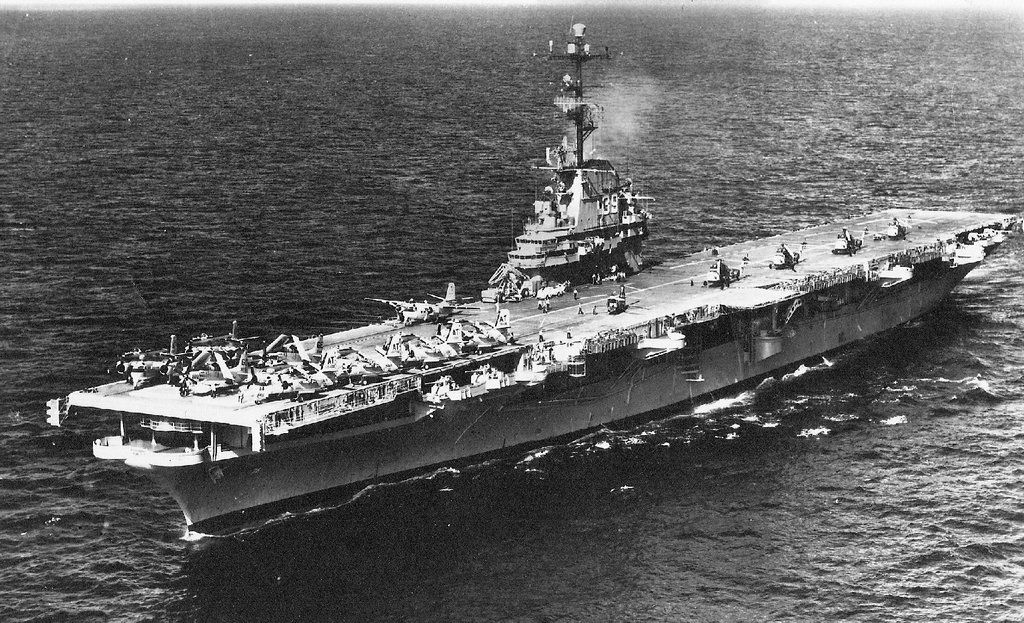USS Lake Champlain (CV-39) Anchored in Hampton Roads with Carrier Air Group 150, August 1945
In August 1945, the Essex-class aircraft carrier USS Lake Champlain (CV-39) was anchored in Hampton Roads, Norfolk, Virginia, serving as a critical part of the U.S. Navy’s post-World War II operations. This mighty warship, with its impressive size and firepower, was a testament to American naval engineering and strategic power during the final months of the conflict.

USS Lake Champlain was launched in 1944 and commissioned into service in 1945, just as World War II was coming to a close. Despite its late entry into the war, the carrier was outfitted with the latest aircraft of the time, forming Carrier Air Group 150 (CVG-150). The group consisted of various fighter and bomber aircraft that were capable of performing both offensive and defensive operations. These aircraft were crucial for maintaining air superiority and providing support to ground forces during the war.

Hampton Roads, with its strategic location on the East Coast of the United States, served as a major naval base and point of departure for military operations. The sight of USS Lake Champlain at anchor in these waters, equipped with CVG-150’s planes lined up on its deck, symbolized the readiness of the U.S. Navy to deploy its forces quickly and efficiently.

Though USS Lake Champlain saw limited action during World War II due to its late commissioning, its role in the post-war period was significant. The ship was involved in various operations, including supporting the occupation forces in Japan and transporting American troops back home. Over the following years, the carrier would continue to serve in different capacities, adapting to the evolving needs of the U.S. Navy.

The legacy of USS Lake Champlain (CV-39) extends beyond its wartime service. It underwent numerous modifications and upgrades over the years, eventually becoming an important asset during the Korean War. Its service in multiple conflicts highlights the adaptability and durability of the Essex-class carriers, which remained vital to the U.S. Navy’s fleet for decades.
The image of USS Lake Champlain in August 1945 serves as a reminder of the transition from wartime to peacetime for the U.S. Navy. It marks a moment when the power of naval aviation began to play a central role in American military strategy, shaping the future of naval warfare in the years to come.



